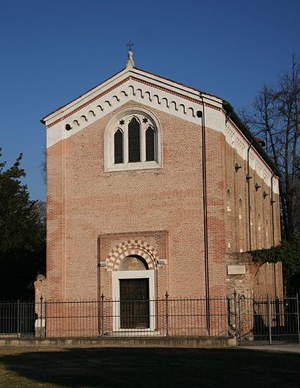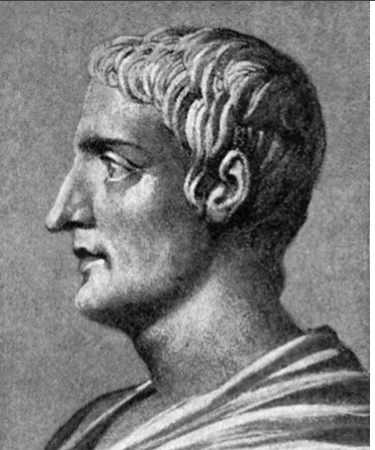Part III. Italy
Chapter 45.Bruno the Fennus[February 27, 1348]
Cultural Explanations
 |
Part III. Italy Chapter 45.Bruno the Fennus[February 27, 1348] Cultural Explanations |
|
 |
In this chapter Bávlos hears Tacitus's description of the Fenni. |
| Nieiddash, Bávlos, Buonamico, Calendrino, in Florence |
In this chapter, the dinner at Master Simone's continues, with the moods and tempers of all involved growing a little volatile from the great quantity of wine consumed—in vino veritas. At first, we hear the friendly sparring of Buonamico and Boccaccio, which turns progressively less pleasant as Buonamico insults the poet's trade, audience, and views on life. Boccaccio maintains his temper, perhaps planning to gain his revenge later, when he makes Buonamico a lowly comic character in his great Decameron.
Buonamico mentions the Scrovegni Chapel and Dante's disparaging depiction of the money lender Reginaldo degli Scrovegni suffering the torments of usurers in the seventh circle of hell. It has often been asserted that Scrovegni's son and heir Enrico degli Scrovegni commissioned the magnificent artworks of the chapel to recuperate the name and reputation of his father, slandered by Dante. Of course, such assertions miss the fact that Giotto's paintings in the chapel were completed in 1305, at least three years before the earliest possible appearance of Dante's Divina Commedia, a work that may have been completed as late as 1321, the year of Dante's death.
 |
| The Scrovegni chapel |
Master Simone seeks to discover Bávlos's origin using a copy of Tacitus's great work Germania. Dating from the first century of the common era, Germania describes the various peoples to the north of Italy. Tacitus acquired his knowledge both through travel and through listening to the accounts of others, perhaps particularly those of his father-in-law Gnaeus Julius Agricola, sometime governor of both the Aquitaine and Roman Britain. One of the most distant peoples mentioned in Tacitus's text are the fenni. The various peoples mentioned in this chapter, and the specific quotations regarding the fenni are my translations of Tacitus's text. Tacitus's description is considered the earliest mention of the Sámi, although, as Bávlos notes, the account is not an entirely accurate account of traditional Sámi life.
 |
| Tacitus |
In general, medieval authorities like Master Simone learned about their world by consulting ancient texts. For them, the words of the ancients were of much greater value as sources of knowledge than, for instance, the testimony of an eye witness like Bávlos.